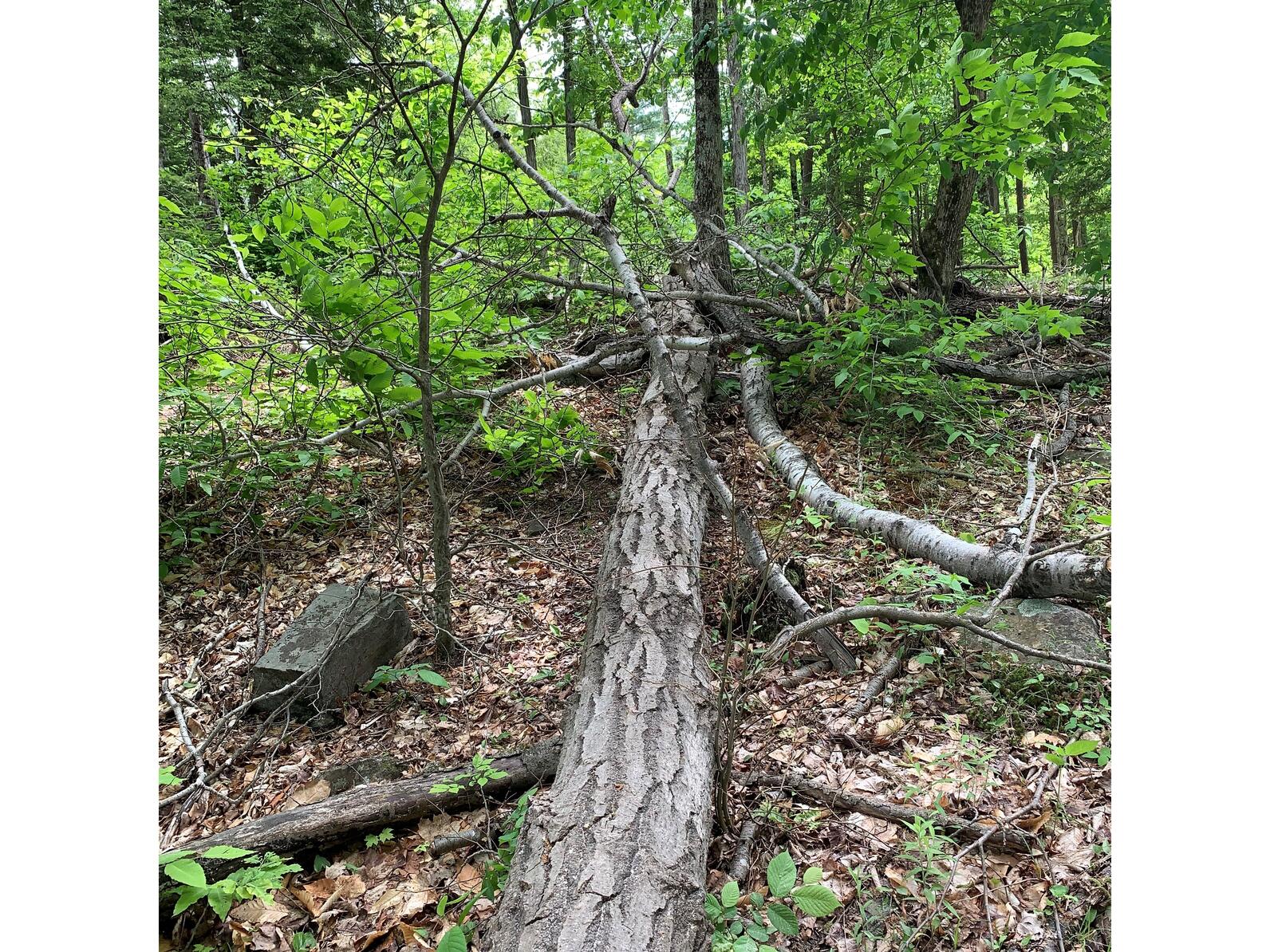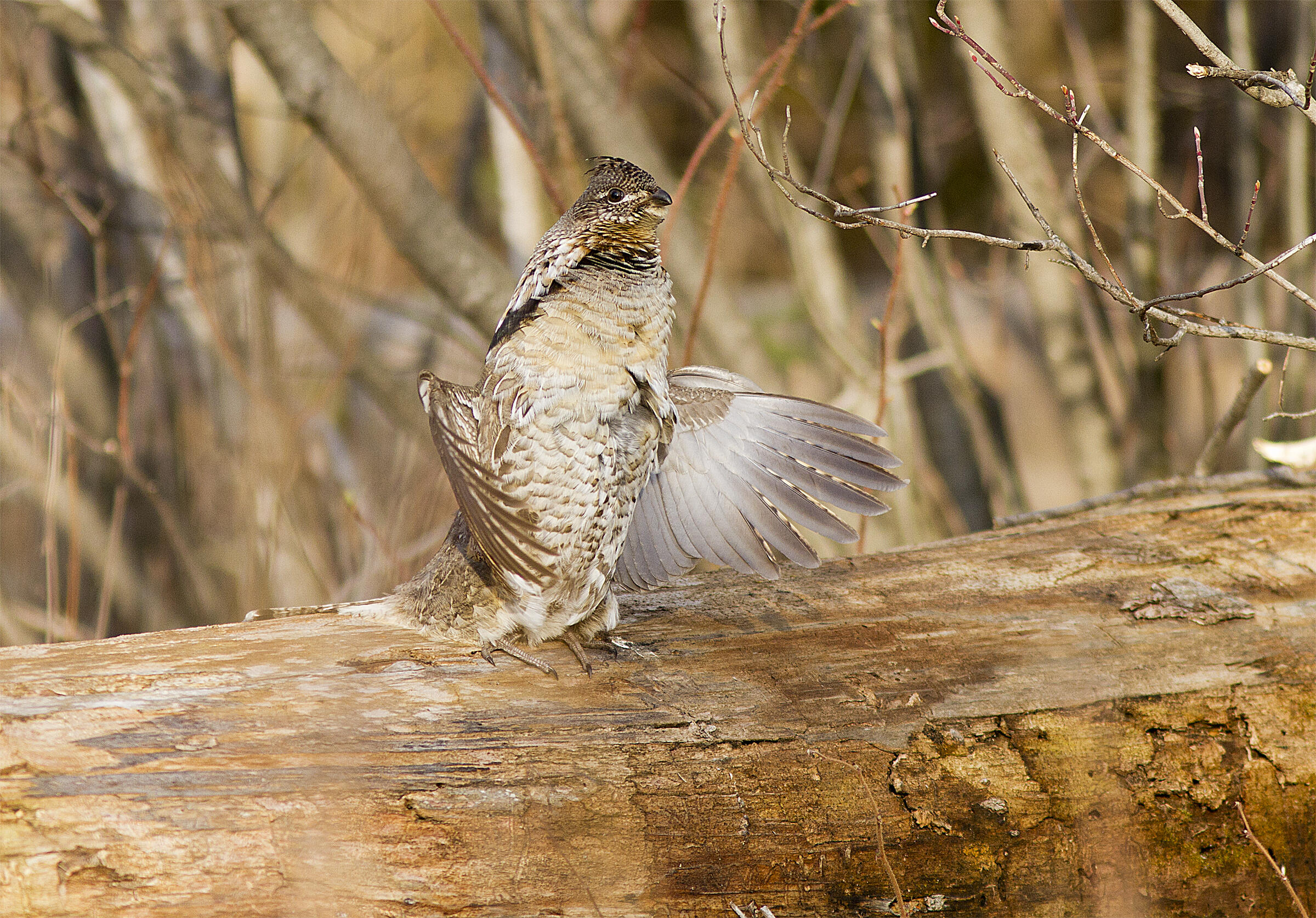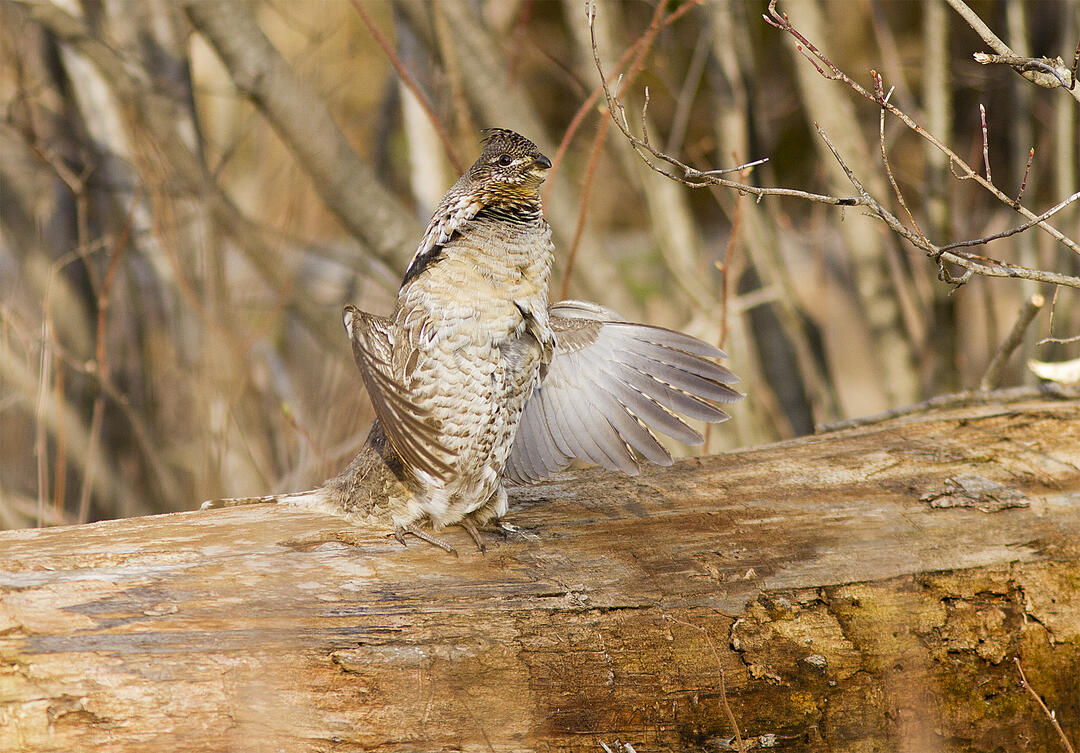Bruce and Gail Cushing knew they had a diverse property before they started connecting with forestry professionals.
Located in Clemons, NY, the Cushings’ 117 acres has a variety of mature tree species – maples, beech, birches, eastern hemlock, oaks, and some large shagbark hickory. Interspersed throughout the mature forest are openings of different sizes that are full of young, regenerating forest.
Having a diversity of forest age classes present on their land greatly enhances the habitat quality for many forest birds, like the Wood Thrush, Golden-winged Warbler, and Ruffed Grouse -- the latter’s populations have declined by about 75% since the 1960s in New York State, according to the Breeding Bird Survey data. Population declines are largely due to the loss of quality habitat.
Luckily, the Cushings’ forest has ideal habitat conditions to support Ruffed Grouse. Patches of dense, young forest surrounded by mature forest provides grouse with ample nesting habitat. The diverse tree and shrub species provide food resources, and numerous hemlock trees offer important thermal cover during harsh winters.
The Cushings work with their professional forester, Steve Handfield, to manage their forest to improve forest health, timber quality, wildlife habitat, and roads and trails that were once skid trails. They have also consulted with Audubon New York staff and other natural resource professionals.

Bruce enjoys doing the work himself and has been improving forest health by removing invasive Japanese honeysuckle and American beech trees that are heavily diseased and dying from Beech Bark Disease. This is part of Timber Stand Improvement (TSI), which includes activities that improve the health and vigor of the forest with the long-term management goal of a timber harvest.
Bruce has also left trees he has cut to lay on the ground, a wildlife habitat tip he received from Audubon New York staff. “Many forest breeding birds need complex structure on the forest floor so they can nest and forage safely. Ruffed Grouse will also use downed logs for drumming,” said Suzanne Treyger, forest program manager for Audubon New York.
The enhanced forest habitat created from felled trees resulted in Bruce and Steve finding an active Ruffed Grouse nest on the ground in early spring. It was the first time either had found a Ruffed Grouse nest, as they are very well camouflaged and hidden. A few weeks after discovering the nest, Bruce saw an adult grouse and 5-6 chicks in another area of his property.
Thanks to their participation in Woods, Wildlife, and Warblers (WWW), a multi-state partnership with Audubon, VT Woodlands Association, and New York Forest Owners Association, among others, the Cushings also receive resources and tools to enhance forest habitat and health. “The biggest adjustment for me, which I learned through WWW, is leaving behind snags and downed material,” said Bruce. “All that used to be firewood. Last year a big oak blew over in a storm. Since learning WWW practice, instead of burning it all as firewood, where it would be forever gone up in smoke, I’ll get to watch it rot and bring life back to my forest for thirty plus years. The snags I can watch for years before they come to the ground. I can put aluminum tags on blow downs etc. and track how long a log has been down and become a new life breeder.
“Last year we came upon a small Ovenbird and nest. So tiny and on the ground in among little sticks and twigs. Small debris is as important as big debris. Leaving things behind just gives me so much more to look at, not just vertical growth.”
If you’re interested in learning about how you can create quality habitat for birds and other wildlife on your land, please visit the Woods, Wildlife, and Warblers website to sign up for landowner tips.







